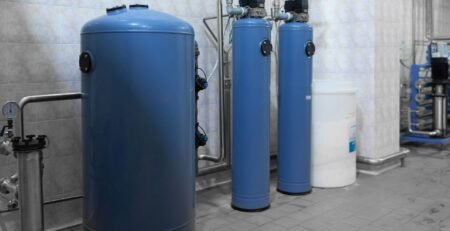8
Sep
Comparing Benchtop vs. Floor-Standing Centrifuges: Which Is Right for Your Australian Laboratory?
Choosing between a benchtop and a floor-standing centrifuge is a common decision faced by Australian laboratories aiming to optimize space, capacity, and performance. Each type serves distinct needs, so understanding their differences helps labs select the best centrifuge for their workflow and budget.
At LabChoice Australia, we guide labs nationwide in making informed choices that maximize efficiency and sample quality. This comparison highlights the key features, advantages, and ideal use cases of benchtop and floor-standing centrifuges.
Benchtop Centrifuges
Overview: Compact, space-saving centrifuges designed to fit on laboratory benches, suitable for small to moderate sample volumes.
Advantages:
- Smaller footprint ideal for labs with limited space.
- Easier to move and install.
- Typically lower cost and simpler operation.
- Suitable for routine clinical tests and small research batches.
Limitations:
- Limited capacity and lower maximum speed compared to floor-standing units.
- May lack advanced features like large rotor options or extended run times.
Floor-Standing Centrifuges
Overview: Large, heavy-duty centrifuges designed for high-volume processing, often installed on the laboratory floor.
Advantages:
- Higher sample capacities and maximum speeds.
- Greater flexibility with rotor types and containers.
- Advanced features like refrigeration, automation, and programmable protocols.
- Suitable for industrial labs, blood banks, and large-scale research.
Limitations:
- Requires dedicated floor space and power.
- Higher initial investment and maintenance complexity.
- Less portable.
Comparison Table: Benchtop vs. Floor-Standing Centrifuges
| Feature | Benchtop Centrifuge | Floor-Standing Centrifuge |
|---|---|---|
| Footprint | Compact, bench-top | Large, floor space required |
| Sample Capacity | Low to moderate (up to ~4L) | High (up to >20L) |
| Maximum Speed | Up to ~15,000 RPM | Up to ~50,000 RPM (ultracentrifuges subset) |
| Temperature Control | Often available (refrigerated models) | Standard in many models, including refrigeration |
| Portability | Portable and easy to relocate | Fixed installation |
| Cost | Lower initial and operational | Higher initial and maintenance cost |
| Applications | Clinical labs, education, research | Blood banks, industrial labs, large-scale research |
| User Interface | Basic to moderate complexity | Advanced digital interfaces and automation |
| Maintenance | Easier routine maintenance | Requires professional servicing |
Which Centrifuge Should Your Australian Lab Choose?
- Opt for benchtop centrifuges if lab space is limited, sample volume is low to moderate, or budget constraints exist.
- Choose floor-standing centrifuges for high-throughput requirements, advanced temperature control, and complex protocols.
Consultation with LabChoice Australia’s experts can help identify the best model tailored to your lab’s specific requirements.
FAQs: Choosing Between Benchtop and Floor-Standing Centrifuges
Q1: Can benchtop centrifuges be upgraded with additional features?
A: Some models offer modular add-ons like refrigeration or specialized rotors.
Q2: How much space do floor-standing centrifuges need?
A: Typically require a minimum floor area of 1-2 square meters plus clearance for ventilation.
Q3: Are floor units more energy-consuming?
A: Generally yes, but newer models focus on energy efficiency and compliance with Australian energy standards.
Q4: What maintenance differences exist between the two?
A: Floor centrifuges require more complex servicing and periodic professional calibration.
Author
Dr. Emily Harper, Ph.D., Biomedical Sciences — Consultant on laboratory instrumentation solutions for Australian institutions.
References
- Eppendorf. Benchtop vs Floor Centrifuge Selection Guide. 2024.
- Olympus Life Science. Centrifuge Types and Applications.
- University of Melbourne. Laboratory Space Optimization Guidelines, 2024.
- Transparency Market Research. Global Laboratory Centrifuge Market Report, 2025.



